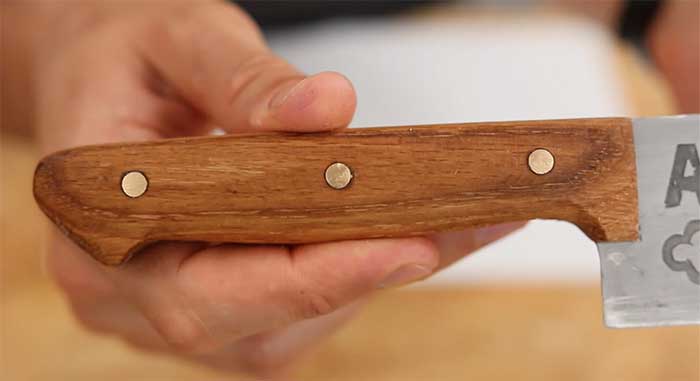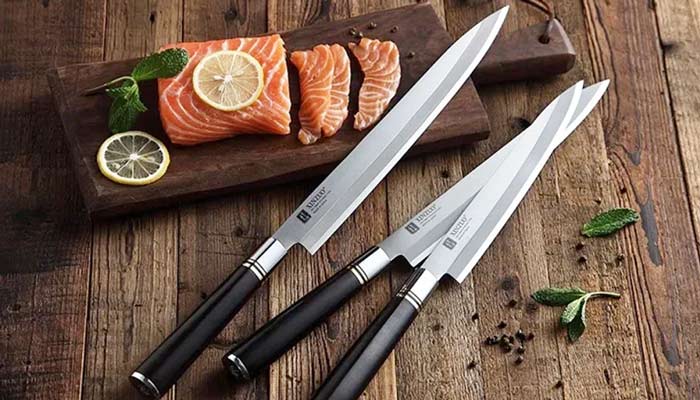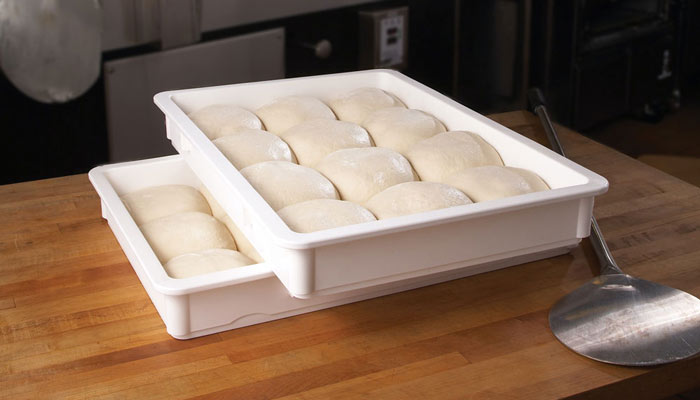How To Make A Handle For A Knife
Handmade things have a different vibe. You can’t get that certain kind of beauty with mass-produced knives. Now, you can buy a handmade handle if you don’t know how to make a handle for a knife. But that is going to cost a lot.
So, why not try your own?
All the things you need to make a handle for a knife are easy to get. Now you just need to know the trick.
If you are determined to get this job done then follow the steps we tell you here. Read the article attentively to get the best results.
Different Types of Knife Handles
The handle of a knife is as important as its blade. The handles are mainly designed for their intended uses. There are a few knife handles that are quite popular such as
- Finger grip handle
- Butterfly swords
- Modell design
- Mild revolver
- Waite tactical
- EWC flagship design
Besides these handles, you could also find some other sorts of handles that are not that common. But useful for other different purposes.
Common Types of Materials Used For Making Knife Handle
There are two important factors you have to consider when you are judging a knife. The first one is its blade and the second one is the material of its handle. The material should be chosen depending on your purpose. Let’s check out some regular material for knives handles.
- Wood Handle
Wood is probably the most common handle compared to all other handles here. It’s popular because it has a large number of good factors. For instance, it’s cheap and convenient. Some users just choose this because of its lightweight. Besides, it goes with every type of blade.
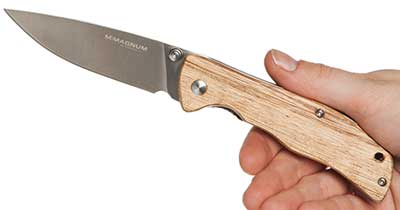
However, it has a major weak side, and the wood gets damaged so easily. And the maintenance is not cheap.
- Aluminum Handle
The most interesting part about aluminum handles is their durability. You can use aluminum handle knives for ages without getting damaged. Apart from that, though it’s metal, you won’t feel the heaviness.
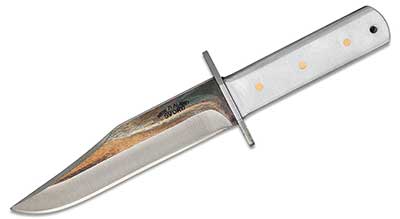
Unfortunately, this type of handlebar is a little pricey. And without any external grip, it can be super slippery.
- Bone Handle
The bone handle is the oldest version of all knife handles. It gives a strong grip with a lightweight feel. The installation is not hard. The most important bone handle brings an elegant look to the knife.
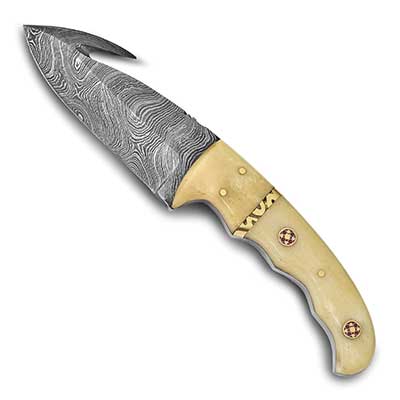
Maintenance would be a big factor since it gets damaged quite easily. Price can be another big issue.
- Horn handle
Impala and buffalo are the major sources of the raw materials of the handles. The look is the strongest part of this material. Gripping is not bad as well. Horn handles are not usually used for daily work; rather, these are used for some special purpose.
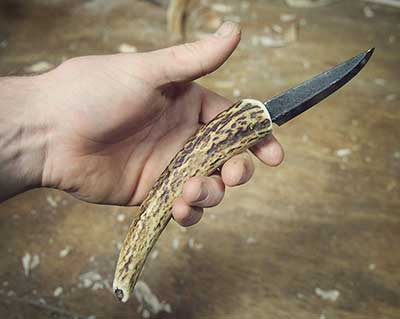
It is not that durable compared to other natural materials. Availability is extremely low.
- Plastic Handle
This is one of the cheap materials. Availability is quite high. You could find both expensive and cheap plastic handles almost anywhere. Not very durable, but you can use any kind of external grip without any problem.
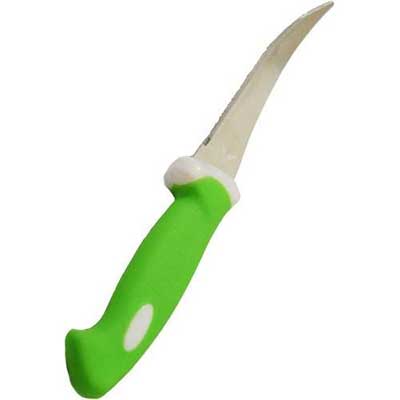
It won’t get any elegant look in here. Not durable enough.
Knife Handle Making Guide
The procedure of making a custom-made knife handle is quite is. All you need is to follow some step-by-step instructions. So, here we are providing you with the necessary guidelines to make a knife handle in an efficient way. Let’s have a look.
Step 1: Preparing and Sizing Materials
- To make the handle, you’d need a knife first. You can either make a knife or buy a full set knife kit, but make sure that it has a full tang and pins.
- The next thing you need to do is to wrap the blade with tapes (electrical, duct, or masking) and make enough layers that you can’t feel the blade over them. This will protect your hands as well as the blade from getting damaged.
- Now take a pair of strong and durable wood pieces or any other suitable material and cut them down to a square leaving up to 1 inch around the handle.
- After that, place the blade handle onto the scales and sketch the shape with a pencil and cut out the shape using the vertical band saw.
- If your pins aren’t purchased along with a knife kit, they are not cut beforehand, so you have to cut them into 1-inch lengths using a metal saw. Then you have to file them down with a grinder or a metal file to flat out the sharp ends.
- Use a vise or clamps to hold the devices together. Mark and cut the extra length of the pins after you put the handle and the pin ends stick out. Use plywood to avoid dents on the scales.
Step 2: Drilling Holes for the Pins
- If your store-bought handle comes with predrilled holes and you don’t have the right-sized knife handle pins, drill the holes larger with a metal drill press.
- For your custom-made one, hold and tape your handle scales and tang together, leaving the holes in the tang uncovered. Keep the sides you want outside-facing outwards and drill them simultaneously to line the pinholes up.
- Use a drill press or a handheld drill to make a vertical hole through an upside-faced tang hole into the clamped scale. Drill the upper, lower, and center parts respectively, and use a slightly larger drill bit than the pins.
- Before you move to the next hole, insert a pin into the previous one to avoid movement and shifting. Use a hammer to put the pins in. Start drilling from the guard and finish at the pommel.
- At this point, peel off the tape and measure the tang onto the scales and trace around the border accurately. Then remove the tang and cut the traced scales at the same time with a band saw, leaving the pins inside.
- Before moving to assemble the blade and the handle together, tape the scales once again to sand and polish the rough edges because it will be hard to do afterward as the blade will obstruct using the belt sander.
- Keep the scales symmetrical for matching sides, and drill the color spacer as well if you want to add one.
Step 3: Gumming The Scales
- First, you need to clean up the tang in order to remove any sort of dirt, debris, or oil. Rubbing alcohol or glass cleaner will be suitable for that. Simply wipe it fully and let it dry for a while.
- Now it’s time for the epoxy to get some texture. To do so, scuff both sides of the tang.
- Next, you need to use epoxy glue on the lower part of the knife. Make sure you do it fast as it can set within a while.
- Go for the first scale at the beginning. It’s better to use a paint spatula or even a disposable knife. This is how you can get an even smooth layer of epoxy. Apply it on both sides of the tang carefully.
- After that, you are required to put some pins on and time to glue the other scale. Keep in mind that you need to work quickly. Now, fill the holes using pins and coat them. You can use a hammer to make it tightly fit. However, you may use epoxy too to coat the pins in order to get a strong bond.
- Now, use the vise and put the handle of the knife into it. Then pressure it to make the handle maximum tight.
- It’s time to use a rag and wipe off the extra epoxy. It’s better for the rag to be soaked in acetone.
- Lastly, let it dry for a while to make the epoxy get set. The drying time varies according to the epoxy you are using. However, it may take from 1 hour up to 1 day.
Step 4: Final Touchup For The Handle
- If you think the epoxy is ready to set, it’s time to take out the knife from the vise. But keep the tape attached to the blade.
- You should grind off any additional knife handle pins if necessary. In that case, you may use a grinder or sander to do so.
- Now, pick a belt sander and start making the handle surface smooth. Go for the edges as well so that you feel comfortable while holding it.
- Next, it’s time to polish the surface with sand. We recommend you use 220-grit sandpaper. When you find the surface smooth enough, you can go for 400-grit sandpaper then. Keep polishing it until you get satisfied.
- If you want to get more glaze on the handle, we suggest you use dewaxed shellac and polyurethane sealer on it.
- Finally, it’s time to remove the tape. Yes, that’s it. Now your knife is completely ready for action. You can go for further finishing on it according to your preference.
Final Thoughts:
Making a knife handle includes some simple steps that you can get through with ease once you’re accustomed to it. From preparations to cutting, shaping, drilling, gluing, and finally putting the whole arrangement together should be a joyride. The necessary thing is to choose the correct materials and tools, and by now, you should know how to make a handle for a knife.
You should find all the items you need to make a custom knife handle in any hardware store. While working, you need to prioritize your safety first. There are different types of handles to make with different materials to add a little customization at the end too.

